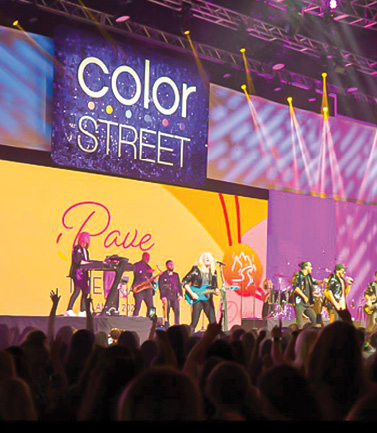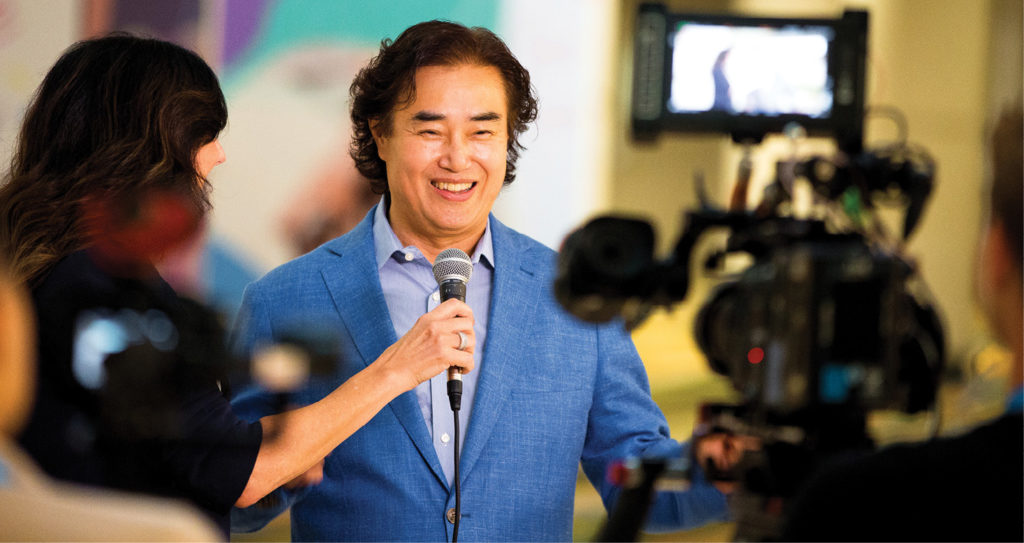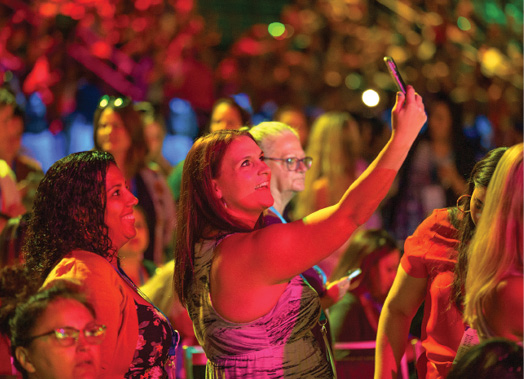Here We Go Again—Flexibility, creativity and contingency planning help ensure the human connection.
It seems like the only thing we know for certain is that these are uncertain times.
The challenges we all face in organizing events, conferences, symposiums, and conventions during these chaotic times feel like a rollercoaster we’d rather not ride. Venue restrictions, city ordinances, travel policies and many other factors are reemerging as Delta continues to push COVID cases higher than ever in many areas of the U.S.

So where are we now—hybrid? In person? All virtual? Truthfully, it’s all three with the ability to “flex” any of those three more or less in a particular direction, along with location—in order to maintain the human connection that all of our brands depend on for differentiation, clarity and engagement.
Here are a few key considerations when planning your events over the next few months and how several organizations have worked to navigate the complexities and challenges facing all of us today.
Hybrid Events Provide Flexibility
You might think that creating a hybrid event, by definition, means compromising. Surely you’ll have to sacrifice a few things to make an in-person event work virtually as well, right? Wrong. In fact, if you hope to make a true human connection, you can’t compromise. But don’t worry, it’s not as demanding as it sounds. The biggest requirement is a change of mindset.
Rather than trying to force the in-person portion to perfectly mirror the virtual portion, think of the two as distinct experiences. They’re part of the same event, but they’re different situations. Therefore, they need to be treated as such. Why? Because the best ways to engage an in-person audience are not necessarily the best ways to engage a virtual audience and vice versa.
There’s a marketing principle that goes like this: when you try to appeal to everyone, you wind up appealing to no one. The same holds true when creating a hybrid event. If you try to only use methods that simultaneously engage both audiences, you’ll wind up engaging neither audience.
When you treat the in-person and the virtual as two different experiences, you can leverage the strengths of each platform to create an event that truly engages everyone. That is the guiding principle to creating an excellent hybrid event: create an excellent in-person event and an excellent virtual event.
Color Street 2021 National Convention—A Hybrid Story
The Orange County Convention Center in Orlando, Florida, was the setting for Color Street’s return to large live events. A truly hybrid solution brought together 4,000 in person and 28,000 virtual Stylists from across the U.S. Navigating the landscape of pandemic dynamics demanded a strategic and flexible approach to planning.

The expansive footprint and shared spaces of the Convention Center posed a challenge. The challenge was how to bring the Color Street brand front and center while assisting the Stylists with easy navigation. From the super-sized exterior banners greeting attendees to a branded and quick-moving Registration process, Stylists’ were wowed. Fun and unique photo ops added to the social media buzz before the first session had even begun.
The “Color Street Pave the Way” General Sessions set was a fun, geometric inspired design that incorporated a blended seating approach which allowed all attendees a great seat. The concept used different elements to bring it to life—an enormous stage LED screen, gobos, LED lighting for an electric effect, hard geometric shapes that absorbed bright color light and four projection screens to allow maximum viewing pleasure. From an exciting launch of sales in a new country to the introduction of the new catalog via a New York styled fashion show, to massive recognition marches, the content and execution was flawless.

To achieve a true hybrid experience for virtual Stylists, a partner platform Pathable was utilized. This comprehensive solution delivered easy to access sessions, chat features and social interactions. A dynamic emcee brought speaker, executive and Stylist interviews to the virtual audience along with tours and back-stage sneak peeks that created a sense of community for all. Content was available on demand for those who could not watch sessions live.
In 11 ½ weeks, the overwhelmingly collaborative effort with Color Street resulted in an incredible back to business, back to networking, back to inspiring event.
As one team member said…. “We all pulled off something remarkable!” The passion for an incredible Stylist experience shined through leaving attendees ready for the next event!
Venue Flexibility and Good Partners
In late spring and early summer, as vaccines become readily available and case numbers were going down across large swaths of the nation, a full return to normalcy seemed not only possible but was happening. Then Delta surged.
Now, each person’s calculus of what they’re comfortable with has changed. And beyond people’s personal risk assessment, city and state-directed mandates can force you to make drastic changes. For many organizations, they already have.
As winter looms, as people increasingly move back indoors, as talk of vaccine boosters becomes clearer, as dynamics continue to shift—and shift fast—the certainty in planning events months out is not much better than last year.
You have a venue booked and the deposit paid for. You have 3,000 attendees coming in. And three weeks before the event, the city imposes restrictions. Or the city doesn’t, but cases are surging, and it’s all over the news. Do you have a plan B? And is plan B fully operational, ready to put into action at a moment’s notice?
Case in point: A medical device company recently planned an event for 500 people in Dallas. Cases surged, and while Dallas didn’t impose restrictions, the company was uncomfortable with bringing in that many people to a hot spot. But here’s the rub: because the city of Dallas did not impose restrictions, the company was obligated to the contract with the venue.
It’s impossible to get that investment back, but how can we get the most ROI out of it? Having a plan B ready to go allowed the company to shift quickly to maximize the situation. The stage was built in the venue as though it would be a live event but then streamed it virtually to attendees across the country. Participants who had to cancel their in-person plans on short notice were able to remain connected and interact with the company’s team and messages, almost as if they were in person.
Having a Plan A and Plan B is almost a requirement with the current environment. And working with an event planning partner who is flexible, organized and creative in generating solutions for your terms and situation is critical.
Staying Connected, No Matter What
As 2021 nears an end and we look forward to another new year, uncertainty will likely persist for some time, challenging event organizers and planners responsible for bringing people together. One thing is for sure, the pandemic has allowed all of us to explore different and creative ways of maintaining the human connection—with our associates, customers, sales teams and whomever we may be trying to reach. We can be confident there are multiple ways of executing our events, regardless of the current situation, location or circumstances. It’s just a matter of developing more than one option and remaining flexible.
Leslie Blye, National Sales Director at L!VE, received her CMP in 2016. In addition to leading L!VE’s Sales Team she plays a central role in the development of new business with a focus on managing client and industry relationships.
From the October 2021 issue of Direct Selling News magazine.


